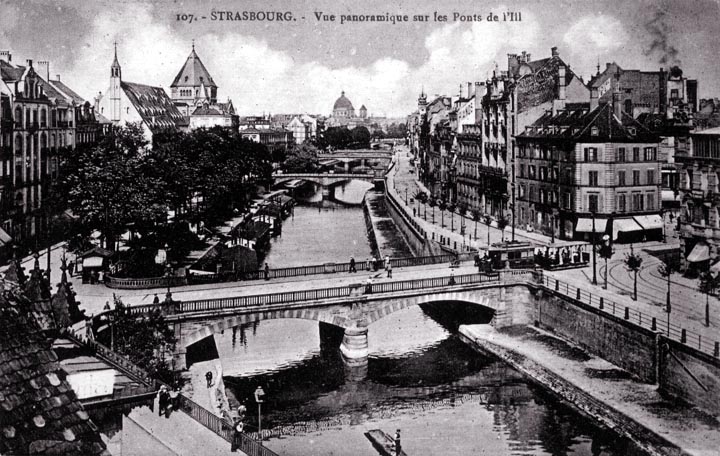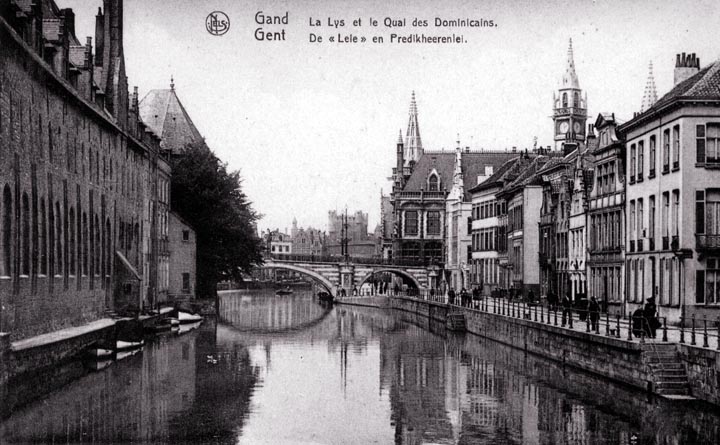
Much of lowland Europe is served by a vast network of barge canals. In some case, canals even cross low ranges of mountains, and it is possible to barge from Amsterdam to the mouth of the Rhôu;ne. These canals are still used to move freight, although their importance is less than it once was. Still, the need for river bridges in this part of Europe to pass barge traffic has had an appreciable effect on the design of both cities and their bridges. We can see here four or five bridges crossing a canal that is probably still in use today. The land has been raised (or the canal dug lower) so that the bridges may connect at street level while still permitting barges to pass beneath. In Venice, the bridges are steeply arched in order to provide the necessary clearance, and steps were necessary on most of the bridges to permit the necessary steep arch. These step are, of course, a serious hindrance, especially to people in wheelchairs. The decision to use two arches was probably related to a desire to pass traffic in each direction under its own arch, avoiding traffic conflicts. This is, of course, an example of grade separation - traffic on the street and traffic on the canal cross each other at different levels and so do not conflict with one another. This principle is at the root of all transport systems that must serve a high density of people. Only by separating traffic vertically can the necessary system capacity be achieved.
|
 Next City Design Home
E-mail |